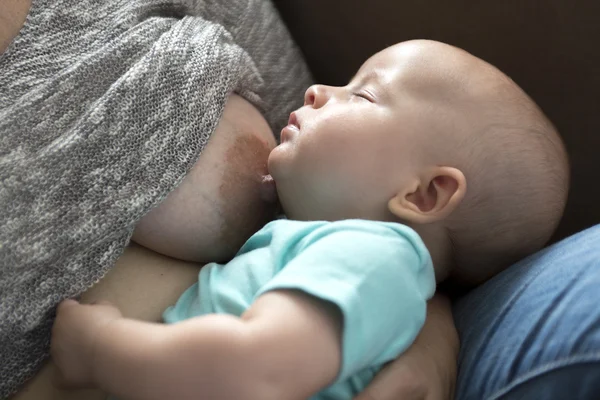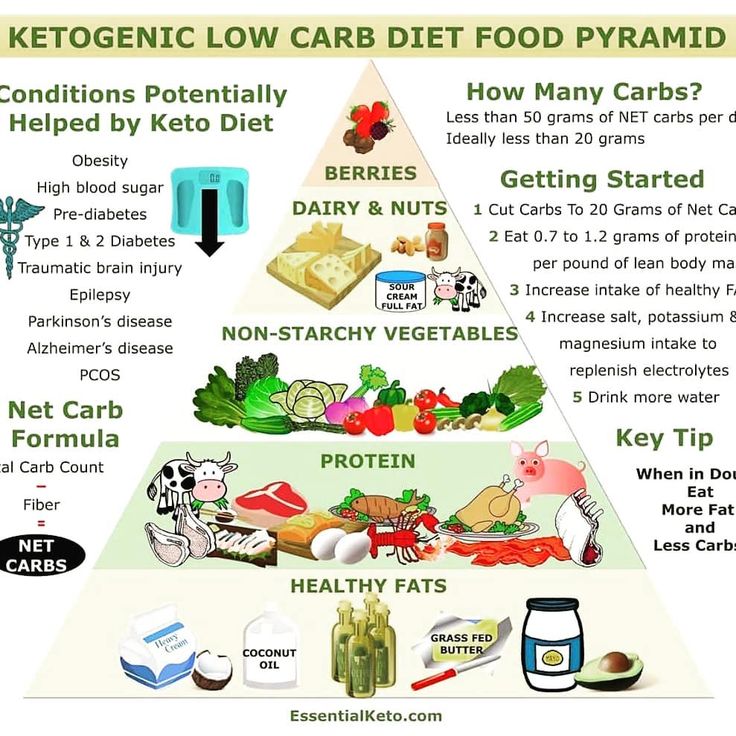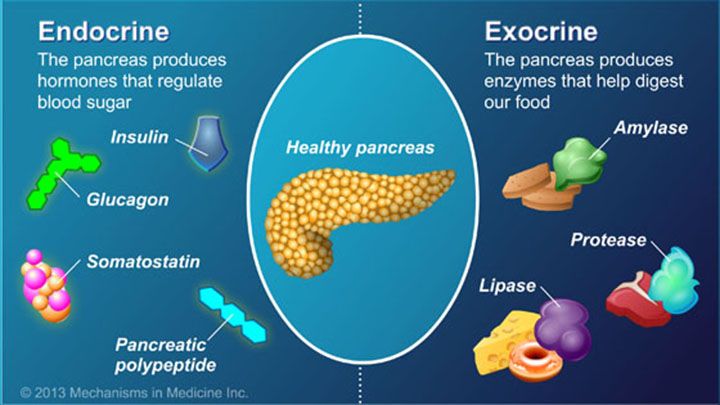What to feed weaning baby
What To Feed Your Baby | 7 to 9 mths | Weaning
Baby's age
- Around 6 months
- 7 - 9 months
- 10 - 12 months
- 12 months+
7 - 9 months
By now, your baby will have had some good practice learning how to eat! Eat together as much as possible – they learn a lot from watching you.
Your baby will gradually move towards eating 3 meals a day (breakfast, lunch and tea). Offering a wide variety of different foods is important to ensure they get enough energy and nutrients (such as iron). Babies don't need salt or sugar added to their food (or cooking water) – salty food isn't good for their kidneys and sugar can cause tooth decay.
Remember, it may take 10 tries or even more for your baby to get used to new foods, flavours and textures. There'll be days when they eat more, some when they eat less, and then days when they reject everything! Don't worry – this is perfectly normal. Just be patient, keep offering a variety of foods, even the ones they don't seem to like, and let them get used to it in their own time.
Babies under 12 months don't need snacks, if you think your baby is hungry in between meals, offer extra milk feeds instead.
Smooth or lumpy?
Hopefully your baby will now be more confident exploring new textures. Offer more mashed, lumpier foods as well as a variety of finger foods. Giving your baby finger foods helps them learn to feed themselves, develop hand-eye co-ordination and learn to bite off, chew and swallow small pieces of soft food.
Babies take different amounts of time to get used to lumps, but it's an important skill they need to learn. Just keep offering them lumpy textures and finger foods and stay with them so you can be sure they are swallowing it safely.
What is baby-led weaning?
Baby-led weaning means offering your baby only finger foods and letting them feed themselves from the start (rather than spoon feeding them puréed or mashed food).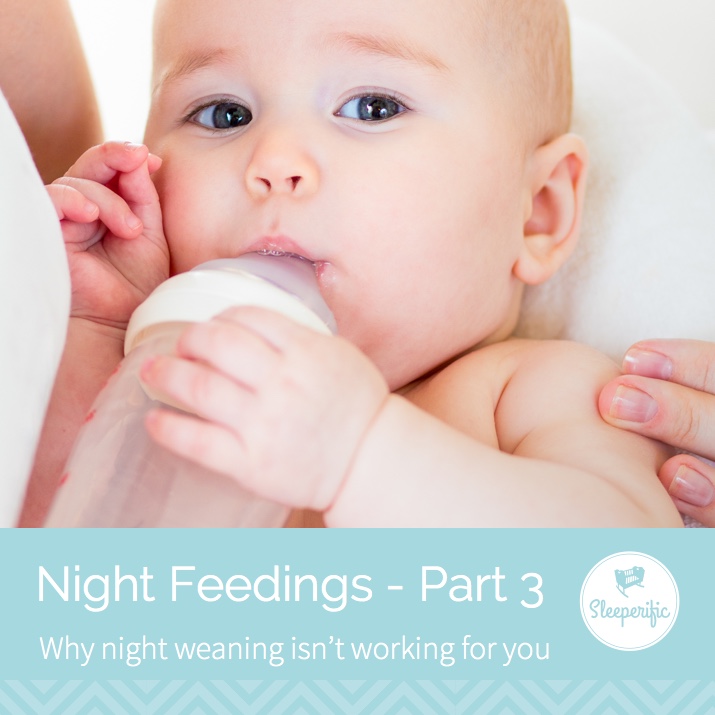 You can offer a range of small, finger-sized, pieces of food.
You can offer a range of small, finger-sized, pieces of food.
Some parents prefer baby-led weaning to spoon feeding, while others combine a bit of both. There's no right or wrong way – the most important thing is that your baby eats well and gets all the nutrients they need.
Should I still give my baby breast milk or first infant formula?
Yes. Breast milk or first infant formula is still important for energy and nutrients during the first year, and should be their main drink until 12 months. You can continue breastfeeding for as long as you both want. As time goes on and your baby eats more solids, they may naturally want less breast milk or first infant formula.
If you're breastfeeding, your baby will adapt their feeds according to how much food they're having. Formula-fed babies may need around 600ml of milk a day, but just use this as a guide. Remember your baby's tummy is tiny and fills up quickly, so offer milk feeds after solids and don't force them to finish the bottle.
Drinks?
Ultimate Guide to Baby Led Weaning (and Best First Foods)
Learn the basics of how to do the feeding approach known as “baby led weaning” and the best first foods for baby to make starting solids easy and fun. Plus: Learn why it’s perfectly okay to use a combined approach of blw and purees.
Baby Led Weaning
The feeding approach known as “baby led weaning” or “BLW” for short, is a style of feeding infants that allows them to feed themselves right from the start. The food is offered in thick finger-size pieces and is soft and easily squishable between your fingers. This way, the food is both easy to hold but has a low risk of choking.
TIP: This method became popular about a decade ago after the publication of the Baby Led Weaning: The Essential Guide to Introducing Solid Food by UK author Gill Rapley.
BLW Baby
One of the many reasons that people are starting to opt for this style of feeding more and more is simply that it’s easy. In many cases, you can modify foods you’re already making to share with your baby and there’s not always a lot of separate cooking involved. It also allows a baby to have control over what goes into their mouths, which sets a good precedent for letting them eat intuitively from the start.
In many cases, you can modify foods you’re already making to share with your baby and there’s not always a lot of separate cooking involved. It also allows a baby to have control over what goes into their mouths, which sets a good precedent for letting them eat intuitively from the start.
What age should I start baby led weaning?
According to the American Academy of Pediatrics, a baby is ready to start solids with baby led weaning when:
- They’ve doubled their birth weight (at least).
- They can hold their head up well and are starting to sit up unsupported.
- They show signs of being interested in food (watching you eat, reaching for food when you’re eating, etc).
- When you feed them, they are able to move the food around in their mouths—rather than spit it right out.
TIP: Look for a highchair that allows a baby to sit up relatively straight so they can have good posture and better control over their arms and hands.
How to Start Baby Led Weaning
The first time you offer solids is such a fun milestone, so you’ll be ready once you follow these simple steps.
- Make sure baby has hit the milestones listed above to let you know that he’s ready to start.
- Get the highchair ready and adjust the straps and foot rest as needed.
- Plan to introduce water when you start solids. I recommend a trainer cup.
- Choose one food to start with and plan to offer only one food at a time.
- Stop when baby starts to fuss, turns his head away, or shows any other signs of not wanting to continue. It’s usually fairly obvious when they are done!
TIP: If you start offering solids and baby just doesn’t seem interested at all, it’s okay. Take a break for a few days or a few weeks and start again. Each kiddo has their own unique timeline.
Best Tips for Starting BLW
Here are a few more tips to consider and review before you get started.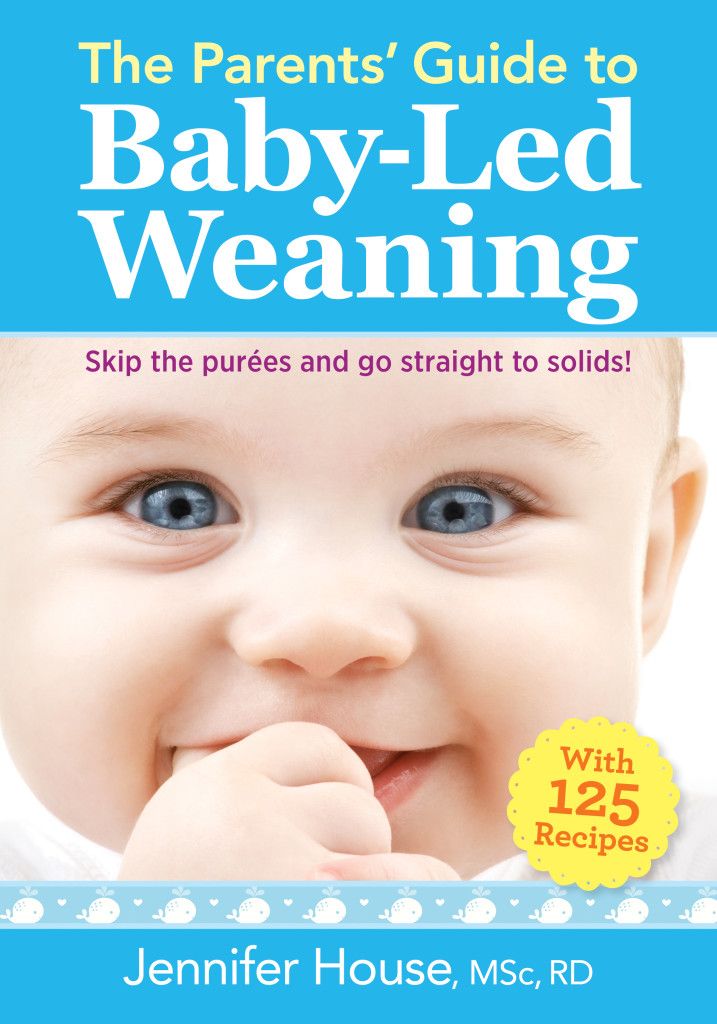
- Understand the gag reflex. Gagging is different than choking though and is most often a sign that baby is learning to move food around in their mouths—and to get it out of their mouths, which is a skill you want them to have!
- Brush up on the basics of how to know when baby is ready to start solids. (Go back to the top of this post for the signs to look for.)
- Set them up for success with a highchair that allows them to sit up straight and has foot support.
- Sit with them as you offer food.
- Check your own expectations of what will happen and simply allow your baby to take the lead.
- Start with one new food a day or every few days.
- Vary the textures of foods you offer to start exposing baby to many right from the start.
- Offer water in a sippy cup or small open cup.
TIP: Remember that breastmilk or formula will continue to satisfy baby’s hunger for the first few months of eating solids. Do not expect solids to replace milk feedings at this age.
First Foods for Baby
Starting solids with baby led weaning or purees are both perfectly acceptable ways to introduce a baby to solid foods—but the topic can get so heated! There’s a lot of pressure to do it the “right” way and I’m here to say that there isn’t one. You 100% can do one or the other, or combine the two to make it work for your family. It’s all good!
Remember, the goal with first foods for baby is that they’re introduced to flavors, nutrients, and foods they can easily eat or suck on. It should be an enjoyable milestone for all involved.
TIP: It’s a good idea to get into the habit of offering an iron-rich food since iron stores in babies start to run out around 6 months and they’ll need to start ingesting it in their food.
Best First Foods for Baby Led Weaning
Here are some of our favorite first foods to offer baby led weaning style. You want foods to be finger sized so they are large enough that baby can’t force the whole piece into their mouth, and a shape that’s easy for a 6 month old to hold with their chubby little hands.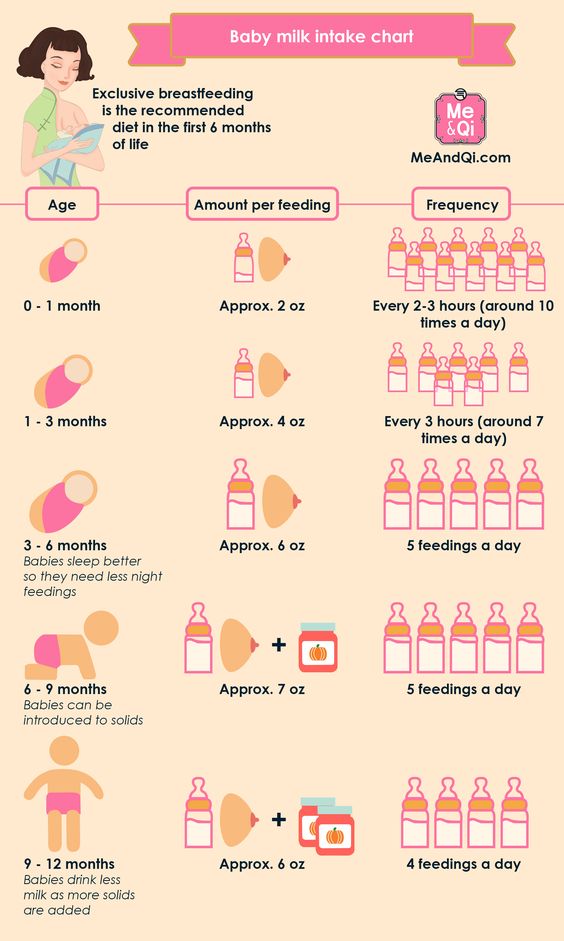 These are some of our favorites.
These are some of our favorites.
- Roasted sweet potato wedges
- Roasted apple wedges, skin on to help them hold together
- Roasted or steamed broccoli florets (big enough for baby to hold)
- Melon slices
- Thick mango slice
- Banana with some of the peel still on
- Toast sticks with mashed avocado
- Avocado spears (make sure the avocado is ripe and soft)
- Lamb or beef, on the bone or a large piece for baby to suck on
- Dark meat chicken, on the bone or a large piece for baby to suck on.
TIP: The foods should generally be soft enough to squish between your fingers with the exception of the large pieces of meat. If baby gnaws a piece down into a smaller piece, replace it with a larger one to avoid her putting a chunk of food into her mouth.
Baby Led Weaning Banana
To serve a banana to a baby, wash it well, then slice it in half. Cut off an inch or two of the peel, but leave the rest of the peel on so it’s not slippery for baby to hold. They’ll suck on the top part like a little popsicle! You can also help them hold the banana if needed.
They’ll suck on the top part like a little popsicle! You can also help them hold the banana if needed.
Foods to Avoid Serving While Doing BLW
You want any foods you offer to a baby while doing baby led weaning to be soft enough to squish between your fingers and safe for them to eat and digest. Plan to avoid:
- Anything hard, sticky, or crunchy (like raw apple or carrot, whole nuts, crackers, or a big spoonful or nut butter)
- Added salt
- Cow’s milk (which is difficult for kids under 1 to digest; plain yogurt is fine though)
- Added sugar (they simply don’t need it)
- Honey (to avoid a risk of botulism)
- Super slippery foods that would be hard for baby to hold (which can be frustrating)
TIP: Always sit with your baby and watch them try to eat. They are your best guide for making adjustments to the foods you serve.
Baby Led Weaning and Choking
There are many parents who dislike this method of feeding because it often sounds like a baby is choking. And while there are surely some incidences of choking, what’s more likely is that a baby will occasionally gag on a piece of food that gets into their mouth that they weren’t expecting.
And while there are surely some incidences of choking, what’s more likely is that a baby will occasionally gag on a piece of food that gets into their mouth that they weren’t expecting.
But remember: Gagging is a sign that baby is doing what she needs to in order to move the food around in their mouth as they learn to eat. It usually sounds more dangerous than it actually is.
TIP: If the sound of gagging really freaks you out, you’re not alone. Consider offering more preloaded spoons with purees to start your journey more slowly.
How to Cut Foods for BLW
You generally want the food to be big enough that it would be difficult for baby to put the entire thing into their mouths. Here are some specifics:
- Foods that are roughly the size of a finger, so about a 4-inch stick.
- Foods that are easy for the baby to pick up—they can’t pick up small pieces until closer to 9 months when they develop the ability to use their fingers in what’s known as a “pincer grasp”.

- Foods that aren’t too slippery—so you can wash and leave some of the peel on fresh foods like bananas, avocado, kiwi, and mango.
TIP: You can also go even bigger if you’re worried about size. Think half of a slice of bread or a big chunk of watermelon.
Will my baby actually eat much food with BLW?
Probably not at first. There will likely be more tasting of the food than eating of it and that is totally fine. They will still rely on breast milk or formula at this age for their main nutrition, so don’t expect them to suddenly start eating full meals. (They’ll get there in a few months, but it takes time!)
Do babies need teeth for baby led weaning?
No! Gums are super strong and front teeth aren’t used for chewing—that happens when the back molars come in. Teeth really have nothing to do with whether or not a baby can eat solids.
TIP: Learn more about what to expect from teething here.
Can you mix baby led weaning and purees?
Absolutely! I think it’s a great idea to mix the two methods simply because it gives you many more options for foods and allows the baby to experience more textures. I recommend allowing babies to feed themselves preloaded spoons—so you put the puree on a spoon, then hand it to them to actually put the spoon into their mouth—so they still have control over what goes into their mouths.
I recommend allowing babies to feed themselves preloaded spoons—so you put the puree on a spoon, then hand it to them to actually put the spoon into their mouth—so they still have control over what goes into their mouths.
TIP: Feeding some purees is also helpful if you’ll be sending food with a baby to daycare since the care provider may not have experience with blw.
Best First Foods for Baby: Purees
Here are some of our favorite purees to start offering baby when they’re ready to start solids. Remember: There’s no evidence that says that you need to start with vegetables versus fruits, so go with something that tastes good to you. Start with single foods pureed smooth and offer just a little at a time on a spoon.
- Mashed roasted sweet potato puree
- Mashed avocado puree
- Mashed banana puree
- Butternut squash puree
- Applesauce, unsweetened
- Mashed pea puree
- Oatmeal baby cereal (with added iron)
TIP: One of my favorite baby food companies is Amara Organic Baby Food, a company using a nutrient protection technology that makes organic purees just as good as homemade. I love how easy they are to use when I need a shortcut and that they have fun baby-led weaning recipes on the side of every box! (paid affiliate link)
I love how easy they are to use when I need a shortcut and that they have fun baby-led weaning recipes on the side of every box! (paid affiliate link)
How do I know when baby has had enough?
If your baby is eating and then starts to turn her head away or just refuses to open her mouth, she’s done! Babies may also start to fuss if they’ve had enough. Learning this new skill takes time and babies can become tired fairly quickly into the process, so don’t expect them to always eat very much or to last very long at the table. This stage is about exploration!
Baby with preloaded spoon of yogurtHow to Let Baby Self Feed Purees
I love offering purees on a preloaded spoon. To do this, the parent, puts some of the food on the spoon and hands it to baby. Then baby can bring the food to their mouth all by themselves. This gives you some of the same advantages of baby led weaning, but can be more comfortable for many parents.
Remember, you can mix what you offer, going back and forth between purees and blw finger foods, so you can offer the same food two different ways to let baby explore. The main goal is to avoid forcing baby to take more bites than they want to, which can sometimes happen with purees.
The main goal is to avoid forcing baby to take more bites than they want to, which can sometimes happen with purees.
When to Introduce Potentially Allergenic Foods
In recent years, guidelines have been updated on when to introduce potential allergens including peanuts, eggs, and shellfish, so unless you have a family history of a food allergy, you can go ahead and introduce them soon after baby starts eating solids. In fact, research is showing that introducing these foods early can actually protect baby from developing an allergy. Talk to your pediatrician if you have concerns.
TIP: Thin unsweetened peanut butter with water to form a very thin Peanut Butter Puree until it’s about the consistency of regular yogurt and offer a very small amount on a spoon or spread on a toast stick.
What does a baby led weaning meal look like for months 7 and 8?
Until a baby is closer to 9 months and is able to pick up smaller pieces of foods, but after they have gotten the hang of one food at a time, I try to offer 1-2 foods they can feed themselves and one puree.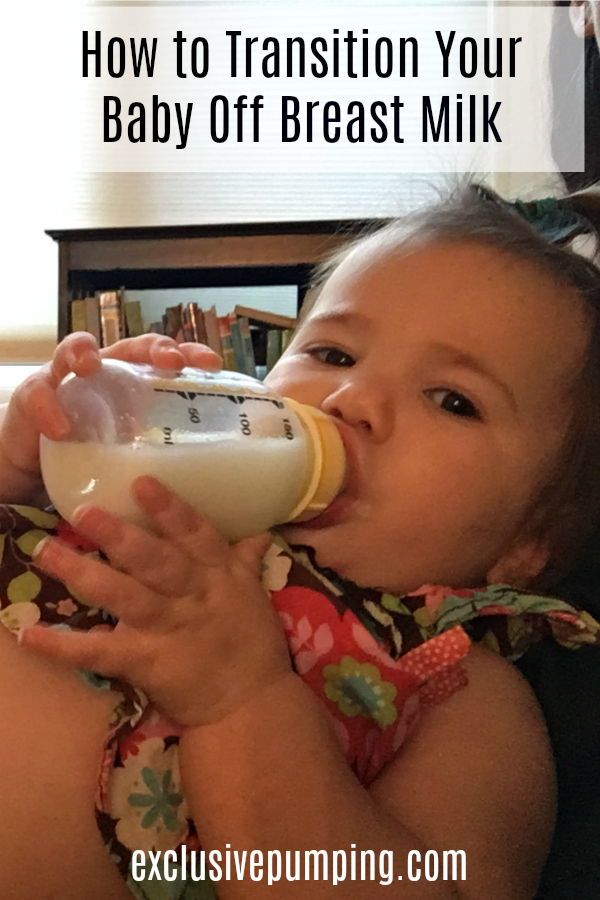 This offers them a chance to ingest more via the puree but still feed themselves a range of textures. You can do more or less food following the lead of the child.
This offers them a chance to ingest more via the puree but still feed themselves a range of textures. You can do more or less food following the lead of the child.
TIP: My Baby Food Chart has loads of with ideas for blw foods and purees by month.
Recipes for Every Stage of Starting Solids
If you’re ready to start solids with baby, or you’re just curious what it looks like to do a mix of baby led weaning and purees, check out my Yummy Baby Food cookbook. It goes stage by stage with specific foods to start in each, with simple recipes and easy feeding tips.
Listen to a recent podcast episode to hear about some of the basics of BLW with our guest Megan McNamee, MPH, RDN, CLT, and a Registered Dietitian Nutritionist specializing in pediatric nutrition who runs Feeding Littles.
I’d love to hear any questions you have with BLW or if your baby had a first food that I didn’t list here. Please comment below to share your experience!
Prep Time 5 minutes
Total Time 5 minutes
Author Amy Palanjian
Cuisine American
Course Dinner
Calories 28kcal
Servings 1
Banana
- ▢ 1 small ripe banana with peel on
Roasted Sweet Potato
- ▢ 1 small sweet potato + 1 teaspoon olive oil
Roasted Apple
- ▢ 1 small apple + 1 teaspoon butter or neutral oil
Roasted Broccoli
- ▢ 1 cup broccoli florets + 1 teaspoon olive oil
Sauteed Green Beans
- ▢ 4 green beans 1 teaspoon olive oil
Melon
- ▢ 1 small piece watermelon or cantaloupe
Avocado Toast
- ▢ 1 slice whole grain bread
- ▢ 1 tbsp ripe avocado
Avocado Spear
- ▢ ⅛ ripe avocado
Lamb or Beef
- ▢ 1 lamb chop, roast, or steak
Pan-Seared Chicken Thighs
- ▢ 1 chicken thigh
- ▢ 1 tsp olive oil
- ▢ 1 garlic clove, optional
Banana with some of the peel still on
Cut a banana in half.
 Use a knife to gently cut around the peel about 2 inches down, leaving some of the peel on so that the banana is easy for baby to hold and less slippery.
Use a knife to gently cut around the peel about 2 inches down, leaving some of the peel on so that the banana is easy for baby to hold and less slippery.
Roasted Sweet Potato Wedges
Preheat oven to 400 degrees and line a rimmed baking sheet with foil. Wash and dry the sweet potato. (You don't need to peel it.) Cut in half, then cut lengthwise into strips. Cut each strip in half again until each is about 1/2-inch thick. Slice in half horizontally if the sweet potato is very long. (Each strip should be about the size of your finger.) Place into a bowl and toss with the olive oil. Spread onto prepared baking sheet and roast for 22-25 minutes or until soft. Let cool slightly and serve.
Roasted Apple Wedges
Roasted Broccoli Florets
Preheat the oven to 400 degrees F. Place the broccoli onto a rimmed baking sheet and toss with the olive oil, coating and mixing well until all of the florets are a little shiny and coated with oil.
 Roast for 15-18 minutes or until tender. Let cool slightly and serve.
Roast for 15-18 minutes or until tender. Let cool slightly and serve.
Sauteed Green Beans
Warm the oil in a large skillet over medium heat. Add the green beans and stir. Cover and cook for about 8 minutes. Remove cover and taste one to see if it’s soft enough. Cook for an additional minute or two as needed.
Melon slices
Avocado Toast
Avocado Spears
(Make sure the avocado is ripe and soft): Cut a thick strip of avocado and offer to baby. You can leave the peel on if that makes it easier for baby to hold (just wash it first).
Lamb or Beef
Prepare a roast, steak, or chop without salt and with butter or olive oil until cooked medium well. Offer a thick slice at least the size of your finger or a drumstick.
Pan-Seared Chicken Thighs
Warm 1 tablespoon olive oil or butter in a large skillet over medium heat. Add the chicken thigh and top with a few slices of fresh garlic, if desired.
 Cover and cook for 4-5 minutes. Remove cover. Flip over and cook for an additional 4-5 minutes uncovered or until a meat thermometer registers 165 degrees F.
Cover and cook for 4-5 minutes. Remove cover. Flip over and cook for an additional 4-5 minutes uncovered or until a meat thermometer registers 165 degrees F.
- Add spices like garlic powder, cinnamon, cumin, oregano, or any other non-spicy flavor you like to make these more interesting.
- Offer just one piece at a time when starting out.
- If baby gnaws a piece down into a smaller piece, replace it with a larger one to avoid her putting a chunk of food into her mouth.
- Store any leftovers in an airtight container in the fridge for 3-5 days. Reheat briefly if needed.
- Remember that it's normal for babies to take time to actually ingest the food. Part of the process is exploring all of the senses related to the experience of eating.
Calories: 28kcal, Carbohydrates: 2g, Protein: 1g, Fat: 2g, Saturated Fat: 1g, Polyunsaturated Fat: 1g, Monounsaturated Fat: 2g, Sodium: 6mg, Potassium: 75mg, Fiber: 1g, Sugar: 1g, Vitamin A: 23IU, Vitamin C: 2mg, Calcium: 2mg, Iron: 1mg
Tried this recipe?Rate in the comments and tag @yummytoddlerfood on IG!
90,000 What is the best way to feed children for breakfast? When marrying in Spain, most newly-born spouses plan to have offspring sooner or later. And of course, like any parents, they are sure that they will take care of the health of their children in every possible way. And health, according to nutritionists, begins with nutrition, in particular with a healthy breakfast. Recently, serious discussions have flared up in Spanish social networks and the media on this topic, which may seem not so important to many, but which in fact is connected with very serious health issues.
And of course, like any parents, they are sure that they will take care of the health of their children in every possible way. And health, according to nutritionists, begins with nutrition, in particular with a healthy breakfast. Recently, serious discussions have flared up in Spanish social networks and the media on this topic, which may seem not so important to many, but which in fact is connected with very serious health issues.
It all started with a Twitter post by Maria Merino, a nutritionist and author of a popular nutrition blog. In her post, she noted that her son does not know what breakfast cookies are because he eats chickpeas for breakfast. This message sparked a discussion, during which many parents began to vigorously defend their point of view about the benefits and convenience of cookies. At the same time, they argued that legumes, in their opinion, are one of the causes of obesity, while referring to the recipes of well-known traditional hearty Spanish dishes, for example, Madrid cocido or Asturian fabada. The nutritionist did not fail to point out their mistake, noting that science has long proven the health benefits of such dishes.
The nutritionist did not fail to point out their mistake, noting that science has long proven the health benefits of such dishes.
This discussion showed that not all Spanish mothers know what exactly is good for their children to have for breakfast. And the fact that many of them were surprised by the information that, it turns out, chocolate milk with cookies is far from healthy, indicates that the Spanish society does not receive enough information about proper nutrition. Not surprisingly, according to statistics, the country's consumption of sugar is constantly growing - and the number of residents who are obese.
As nutritionist Silvia Romero, an expert in childhood obesity, points out in a recent El Pais article, the country owes its bad breakfast habits to the food industry. Chocolate milk, chocolate spread, pastries, ready-made fruit juices, and sugar-filled cereals make breakfast a dreadful thing to eat—and yet that is exactly what most Spanish children get.
Pediatrician Carlos Casabona, baby nutritionist and author of You Choose What to Eat, agrees. For many years he has been observing what the children who come to his clinic consume for breakfast. He writes about this in his blog, lamenting that Spanish mothers consider cookies a product suitable for constant daily consumption. For breakfast, they prefer to give their children chocolate milk and sugary cereals - no doubt quick and convenient, supermarket shelves are full of such products, and they are the ones that the food industry imposes as a “healthy” choice.
For many years he has been observing what the children who come to his clinic consume for breakfast. He writes about this in his blog, lamenting that Spanish mothers consider cookies a product suitable for constant daily consumption. For breakfast, they prefer to give their children chocolate milk and sugary cereals - no doubt quick and convenient, supermarket shelves are full of such products, and they are the ones that the food industry imposes as a “healthy” choice.
Junk food has become the norm
The main problem with children's breakfast choices, Casabona says, is that the choice hasn't been revisited in decades, ever since Spaniards learned about all kinds of cereal and started buying "economical" giant family packs. It is these packs, according to the expert, that are the reason for the formation of bad habits in all family members, including children. By purchasing such a "economical product", the whole family is then forced to use it daily.
As the pediatrician notes, in recent years, Spain has acquired a lot of bad eating habits, mostly borrowed from the US along with related products. Today, more than the first generation of Spaniards grows up on these products, firmly convinced that the advertisements of manufacturers promising healthy and inexpensive miracle breakfasts from milk and cereals really do not lie.
Today, more than the first generation of Spaniards grows up on these products, firmly convinced that the advertisements of manufacturers promising healthy and inexpensive miracle breakfasts from milk and cereals really do not lie.
It is this kind of advertising, suggests Silvia Romero, coupled with the recommendations of ill-informed "nutrition experts" that lies at the heart of the modern Spanish food pyramid. At the same time, the inhabitants of the country lack information that would not be voiced by nutritionists and doctors lured by large corporations, but by honest experts who would clearly say: cereals, sweet cookies and ready-made muffins should not appear on the child’s table at all.
You should know about unhealthy breakfasts even before you get married in Spain and have offspring
As nutritionist Julio Basulto notes, many Spaniards believe that breakfast is not an important meal of the day. In fact, according to nutritionists, breakfast is just as important for the body as all subsequent meals, and should include wholesome and healthy foods. Recent studies show that although people who skip breakfast do not suffer from diet-related diseases more often than those who eat breakfast regularly, nevertheless, parents should definitely develop the habit of breakfast in their child - and eat breakfast correctly. But what if the child is already accustomed to eating cookies for breakfast, washed down with chocolate milk - and refuses to eat healthy food in the morning? According to Dr. Casabona, in this case it is better to do without breakfast at all, because in an hour and a half to two hours the child can have a snack at school, where in most cases he is offered much more healthy food - whole grain bread or fruit.
Recent studies show that although people who skip breakfast do not suffer from diet-related diseases more often than those who eat breakfast regularly, nevertheless, parents should definitely develop the habit of breakfast in their child - and eat breakfast correctly. But what if the child is already accustomed to eating cookies for breakfast, washed down with chocolate milk - and refuses to eat healthy food in the morning? According to Dr. Casabona, in this case it is better to do without breakfast at all, because in an hour and a half to two hours the child can have a snack at school, where in most cases he is offered much more healthy food - whole grain bread or fruit.
At the same time, nutritionists note: there is no such thing as an ideal breakfast. Moms who care about the health of their children can provide them with a very wide choice of products that do not contain huge amounts of sugar. This includes fresh fruit, whole milk, yogurt, bread with fresh olive oil, hummus, avocado, and even rice or beans. All this is much more useful than the sweet flakes that have already become familiar to many, in which, according to modern nutritionists, there is absolutely nothing good for the health of the child.
All this is much more useful than the sweet flakes that have already become familiar to many, in which, according to modern nutritionists, there is absolutely nothing good for the health of the child.
You can find out the most relevant and exclusive news from Spain in our Telegram channel
Is it a problem for neighbors to take care of homeless animals?
September 18, 2019
Tips
Pay attention to the date of publication of the material: the information may be outdated due to changes in legislation or law enforcement practice.
Because of feeding stray dogs and cats, is it dangerous to go outside and unsanitary environment? The legislation establishes a moral obligation to care for animals without an owner, but this should not violate the rights of others. Where to go to get rid of the hassle?
An interesting and important civil case was considered in July this year in the Rostov Regional Court. It all started with the fact that in one of the dacha associations in Rostov-on-Don, a compassionate woman began to feed local stray dogs. This good deed was not liked by her neighbor, who, after unsuccessful attempts to resolve the conflict, went to court. In the statement of claim, she asked to prohibit the defendant from feeding stray dogs and to oblige her to dismantle the booth, which is located on the territory of the common use of the partnership. The defendant objected, pointing out that the booth was not installed by her, but by the plaintiff for the dog, which she herself had kicked out of the house earlier, and she does not “feed” the dogs, but feeds them “out of a sense of mercy and so that they do not die of hunger.” The court of first instance satisfied the plaintiff's demands: he ordered the defendant to remove the booth, and forbade feeding dogs on the territory of the partnership.
It all started with the fact that in one of the dacha associations in Rostov-on-Don, a compassionate woman began to feed local stray dogs. This good deed was not liked by her neighbor, who, after unsuccessful attempts to resolve the conflict, went to court. In the statement of claim, she asked to prohibit the defendant from feeding stray dogs and to oblige her to dismantle the booth, which is located on the territory of the common use of the partnership. The defendant objected, pointing out that the booth was not installed by her, but by the plaintiff for the dog, which she herself had kicked out of the house earlier, and she does not “feed” the dogs, but feeds them “out of a sense of mercy and so that they do not die of hunger.” The court of first instance satisfied the plaintiff's demands: he ordered the defendant to remove the booth, and forbade feeding dogs on the territory of the partnership.
Disagreeing with this decision, the defendant filed an appeal with a higher court, in which the case, as lawyers say, “turned”. Three judges of the Rostov Regional Court came to the following conclusions: leave the booth in place, since it stands on the common territory of the partnership. It does not interfere with the plaintiff and is established by it, and only a partnership as a legal entity can file a claim for the dismantling of the booth.
Three judges of the Rostov Regional Court came to the following conclusions: leave the booth in place, since it stands on the common territory of the partnership. It does not interfere with the plaintiff and is established by it, and only a partnership as a legal entity can file a claim for the dismantling of the booth.
An even more interesting conclusion was made after studying the issue of the legality of feeding stray animals. The court found that Russian law does not prohibit feeding them. On the contrary, in accordance with Art. 4 and 17 of the Responsible Animal Care Act 1 , which came into force this year, “compassion and humane treatment of animals without owners is the duty of all citizens”, and the external manifestation of this attitude is, among other things, feeding them and “preventing the negative impact on their health of weather events” (so the court spoke somewhat ponderously about the booth). The plaintiff's arguments that rats, mice, fleas appeared due to feeding dogs and that the fed animals attacked her and her family members turned out to be unfounded.
The decision of the Rostov Regional Court is important because for the first time in judicial practice, judges referred to the Law on Responsible Treatment of Animals. And it establishes that animals are creatures capable of experiencing emotions and physical suffering, and they should be treated morally and humanely. That is, our legislation establishes the right and even the moral obligation to feed and take care of animals without a master, among other things.
For more on the Responsible Animal Care Act, see How to Hold a Negligent Dog Owner to Account. You will learn that the law provides for punishment for the owner who did not keep track of the pet or deliberately failed to fulfill his duties; how to get compensation for damage to health or property caused by a dog, and in which case the victim will not receive anything.
The law allows animal lovers to take care of stray dogs and cats. But what if it violates the rights of their neighbors?
Part 3 Art. 17 of the Constitution of the Russian Federation establishes that the exercise of the rights and freedoms of some persons must not violate the rights and freedoms of others. That is, feeding animals should not create unsanitary conditions or endanger neighbors.
17 of the Constitution of the Russian Federation establishes that the exercise of the rights and freedoms of some persons must not violate the rights and freedoms of others. That is, feeding animals should not create unsanitary conditions or endanger neighbors.
Who can complain if caring for animals causes inconvenience to others?
More often, stray animals are found in public areas managed by legal entities or administrations of cities and towns. In such cases, you can contact them. In Moscow, this is a district government, in a village - the administration of a rural settlement, in a dacha or in the territory where garages are located - the board of a partnership or cooperative.
But one should not expect that after the appeal a team will be sent like a sub-department of cleaning up the communal farm of the city of Moscow from stray animals. With the adoption of the Law on the Responsible Treatment of Animals, their extermination was replaced by "OSVV" - "capture, sterilization, vaccination, release. " This means that homeless animals on our streets have been given a legal status, and they cannot be offended. City services should ensure that after catching the animals are taken to a shelter. There they are sterilized, vaccinated, kept for a while - so that they have a chance to find an owner, and then they release those of them who do not show aggression. That is, now neglected animals are recognized as part of urban life, and not as an annoying nuisance that needs to be destroyed at the first opportunity.
" This means that homeless animals on our streets have been given a legal status, and they cannot be offended. City services should ensure that after catching the animals are taken to a shelter. There they are sterilized, vaccinated, kept for a while - so that they have a chance to find an owner, and then they release those of them who do not show aggression. That is, now neglected animals are recognized as part of urban life, and not as an annoying nuisance that needs to be destroyed at the first opportunity.
If the case takes place on the territory of a dacha partnership or a garage cooperative, then the board may prohibit the feeding of animals, but it has no right to decide on their extermination. Such actions may fall under the new edition of Art. 245 of the Criminal Code of the Russian Federation: causing pain and suffering to an animal, resulting in its death or injury, is punishable by imprisonment for up to three years; the same acts, but in relation to several animals - by imprisonment for a term of three to five years.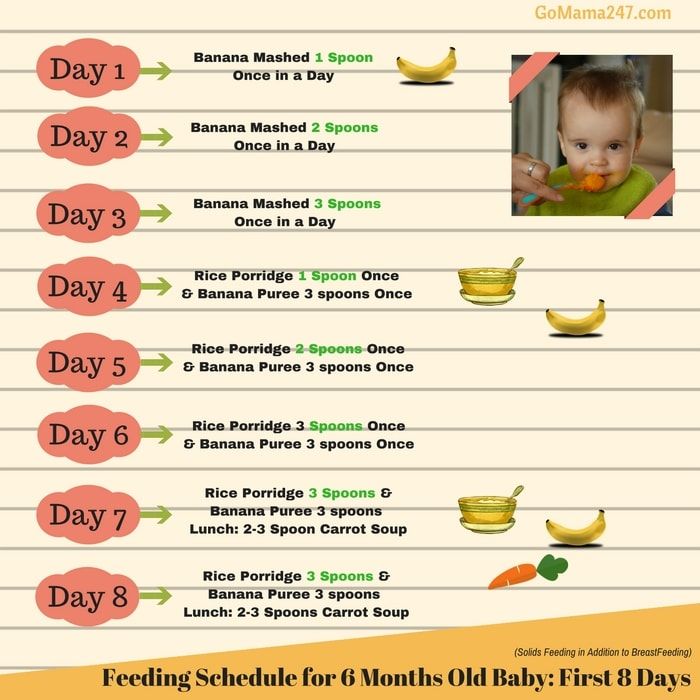
What if the dispute about stray animals cannot be resolved?
If it is not possible to resolve the case peacefully, in a neighborly way, then you can go to court at the place of residence of the defendant. But the court will not have enough unfounded allegations of dirt or fleas. Each statement will have to be proved - by documents or testimonies of witnesses. For example, an unsanitary condition can be confirmed by acts of inspection of the territory, the conclusions of the Service for the Control of Animal Diseases. Neighbors can act as witnesses.
In order for the court to take your side, it will be necessary to prove: firstly, the fact of infringement of your rights - the mere fact that you do not like dogs or cats will not be enough; secondly, that this infringement has a causal relationship with the care of stray animals. If you can convince the court that your rights have been violated and this happened, for example, precisely because of feeding animals, then the court will prohibit caring for them in this place.




